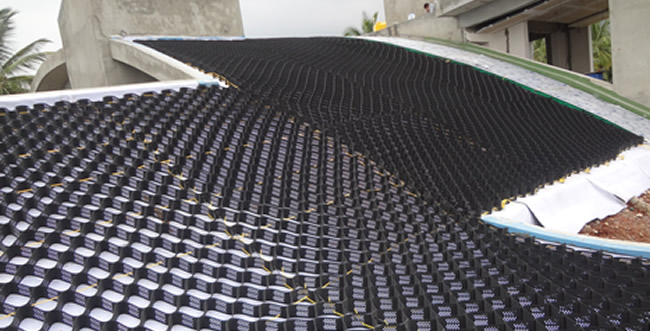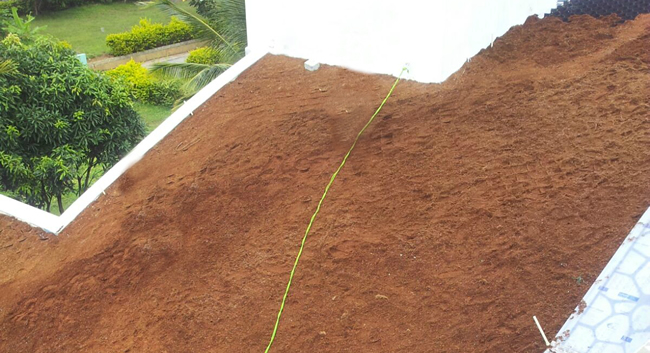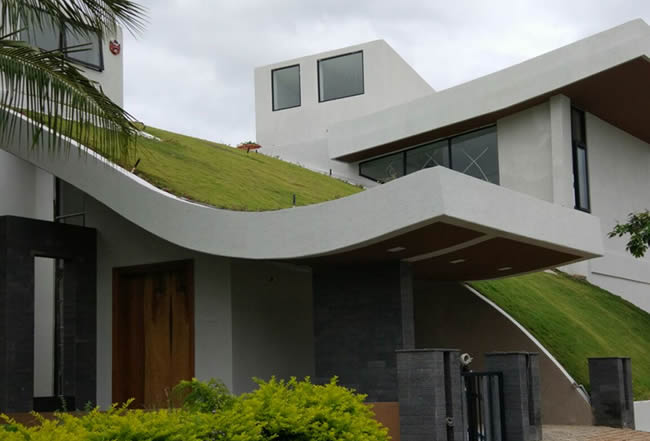Much of the international development dialogue is now centered around the idea of a Green Recovery. Cities around the world are using Covid-related lockdowns and quieter economies to experiment with new infrastructure development and utilization plans. Some of the more common strategies have included converting more road space to cycling- and pedestrian-only spaces, transitioning to more renewable energy generation, and shifting urban designs to green engineering solutions for stormwater management.
Greenroofs fall into the green engineering solutions, especially with regard to stormwater management, biodiversity, architectural aesthetics, and beneficial impact on urban heat islands. These systems continue to gain support in the roofing community, with the many ways greenroofs improve building performance.
We often see very large-scale projects in the news: the Vancouver Convention Centre, the Olympic Sculpture Park in Seattle,
But the technology is incredibly scalable. (The origin of greenroofs can be found in small structures, such as goats living atop a grass roof.) Residential works and small commercial structures, particularly in new construction, provide an incredible opportunity for transforming stormwater infrastructures.
As this project from Strata Geosystems shows, geosynthetics can readily be used to efficiently achieve greenroof design goals, such as to support a vegetated sloped roofed.
RELATED: Sustainable Development Goals and Geosynthetics
SLOPED GREENROOFS WITH GEOCELLS
Vegetated landscapes on a flat or sloped roof are sometimes dismissed as potentially too costly up front. The costs of greenroof systems have come down substantially, though, and their long-term performance has shown them to be shrewd investments. They mitigate the effects of stormwater in several ways and provide a long life-span for the roof with negligible maintenance. A greenroof slows water flow, retaining up to 75% of the rainwater, which in turn alleviates significant pressure on stormwater infrastructures, when one considers urban density.

Geosynthetics such as geotextiles and drainage composites are commonly incorporated into greenroof systems, but they aren’t the only geosynthetic materials being used. Geocells are helping the greenroof market grow with their exceptional stability on slopes.
Soil on a slope is, of course, at risk of erosion during storms. When that slope is on a roof, that erosion can be concerning. Geocells provide stability for soils and security for vegetation in flat and sloped greenroof installations.
In Bangalore, India, geocells were utilized to provide a sloped greenroof design on a residential structure for high performance and durability against adverse weather conditions while preserving a natural look.
RELATED: Unique Project Showcases Interior Design with Geocells
GREENROOF PROJECT EXECUTION
While conventional gardens on a rooftop usually consist of a few pots and planters, a green roof system can cover the whole roof area with the cultivation of plant life without soil erosion. If the whole area was landscaped, it typically would be completed with vegetated soil. That adds considerable weight to a roof and, if erosion is not guarded against, it leads to a fair amount of maintenance.

For the client in Bangalore, Strata Geosystems’ civil engineering technical team designed a geocell solution to these structural challenges. The cost-effective, long-term design approach provided an HDPE geocell confinement system that prevented soil from slipping while reducing the overall system weight.
The process was simple: The StrataWeb® panels were placed across the roof, infilled with either soil or mulch, compacted using minimal equipment, and vegetated.
The securely anchored system supported the mulch and soil effectively to prevent erosion and reduce maintenance. The engineered perforations in the cell walls allowed for drainage for when the stormwater volume exceeded the uptake rate from the plants and the soil’s ability to retain more moisture.
The engineered system added significant value:
- Increased roof life span with significantly lower maintenance
- Sloped greenroof installation was completed within a week
- Very environmentally friendly
- Strong insulation characteristics for the home
- Exceptional aesthetics

Learn more about Strata Geosystems geosynthetics and engineering at www.strataindia.com.











